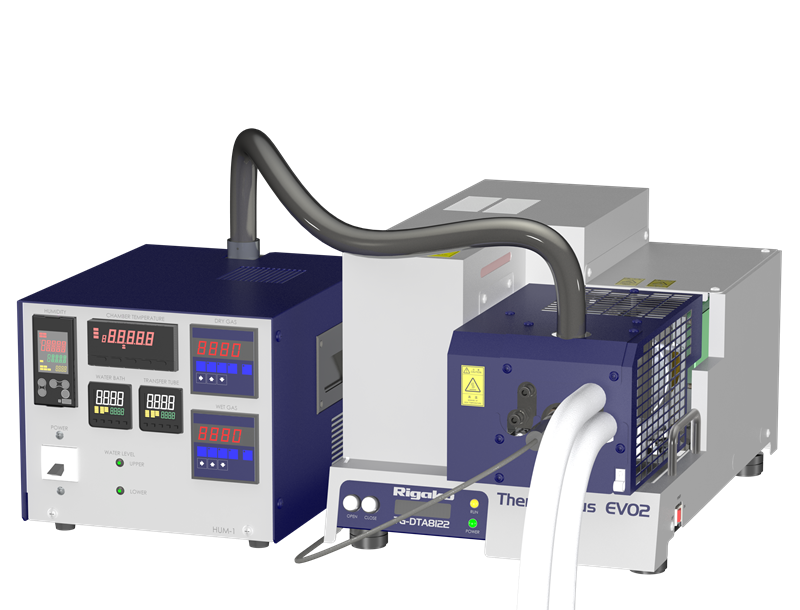STA8122/HUM
Features
- Humidity control
- Accurate compensation on horizontal differential triple-coil balance
- Compact furnace greatly speeds up heating and cooling
- Dynamic TG measurement modes
- Stepwise isothermal analysis (SIA) method
- Constant rate control (CRC) method
- Measuring temperature range: Ambient to 1100°C
Simultaneous thermal analysis with humidity control
Measures weight changes and endothermic or exothermic reactions
Specifications
| Product name | TG-DTA/HUM |
| Technique | Simultaneous thermal analysis with humidity control |
| Benefit | TG provides information on the weight changes derived from reactions such as dehydration, evaporation, sublimation, desorption, decomposition, adsorption, oxidation, while DTA provides temperature information associated with endo- or exothermic reactions. |
| Technology | Horizontal differential thermogravimetric-differential thermal analyzer (TG-DTA) |
| Core attributes | Horizontal differential triple-coil balance system which is the mainstream mechanism because the thermal drift which apparent mass change with increasing temperature becomes negligibly small. |
| Computer | External PC |
| Core dimensions |
|
| Mass (core unit) | 31 kg (TG-DTA), 15 kg(HUM-1) |
| Power requirements |
|


